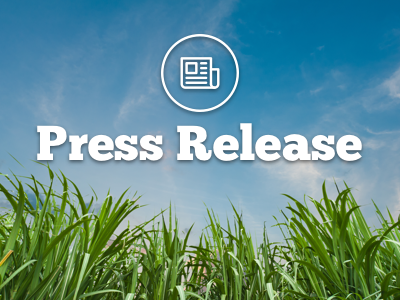Clewiston, FL – For the second straight year, U.S. Sugar is releasing air quality data from government and private sources showing the results of three years of air quality monitoring in the Glades farming communities. To complement the information published by state agencies showing better than average air quality in the Glades, the latest report also includes internal data collected by professional air monitoring experts on behalf of U.S. Sugar confirming the public air quality data.
“The people of U.S. Sugar are happy to release the Second Annual State of Our Air Report for the 2020—2021 season, which shows that the Glades communities have air that is good, safe and clean,” said Robert H. Buker, Jr., U.S. Sugar’s President & CEO. “U.S. Sugar, along with hundreds of independent, family farmers, is proud of our partnership and commitment to our community.”
In order to get even more information and data than was publically available, professional-grade air quality monitoring equipment was placed in three additional locations throughout the region. We also decided to look beyond small particulates (PM2.5) and check polycyclic aromatic hydrocarbons (PAHs). PAHs had been part of recent false attacks by outside activist groups and paid news reports. Fortunately, all the internal monitoring data farmers collected confirms what the public air quality monitoring has shown for decades—our farming region has good air quality that meets all state and federal air quality standards—which is the best rating for air used by the federal government.
The Report is a continuation of our ongoing conversations with our neighbors about U.S. Sugar’s commitment to helping keep the farming communities where we work, play, and raise our families clean, safe, and healthy. U.S. Sugar is proud to reaffirm that commitment in releasing the information included in this report.
Summary & Key Findings of the Second Annual State of Our Air Report:
- Despite dishonest claims from anti-farming activists, privately collected PM 2.5 data confirms that the Belle Glade monitor was never “malfunctioning” and instead provided accurate and reliable air quality data for the people of theGlades. FDEP and other agency officials also confirm the fitness and reliability ofpublic equipment.
- In November, Florida Department of Environmental Protection installed a new, federally-approved FEM regulatory monitor that (1) shows readings consistent with the previous monitor and (2) is the same type monitor used to collect the private data included in this report; which should serve as additional proof points that the air in our communities is “good.”
- Both publicly available and privately collected data on small particulate matter (PM 2.5) show the Glades’ communities continue to have clean, safe, and “good” air – which is the very best designation of air quality when analyzing PM 2.5 (as set by the EPA).
- In addition to low particulate matter levels, the Glades’ communities also experience extremely low levels of benzo[a]pyrene (BaP)—which isproduced by various sources and often found in breathing zones. Privatelycollected data over the entire sampling period consistently fell well below theRegional Screening Level (RSL) established by the EPA.
- As farmers and businesses that rely on science and data in our daily lives and to provide additional professional-grade air quality monitoring information, U.S. Sugar started privately monitoring local air quality to provide additional data to the residents of our communities.
For more information and to read this and last years report, click these links: 2021 and 2020. Para español, presione aquí.
U.S. Sugar is a farming company that grows sugarcane, citrus, sweet corn and other winter and spring vegetables in South Florida. The company was founded in 1931 by Charles Stewart Mott, a visionary leader who hailed from a long line of farmers. Since the beginning, the company’s success has been rooted in traditional farming values and respect for the land.
# # #


